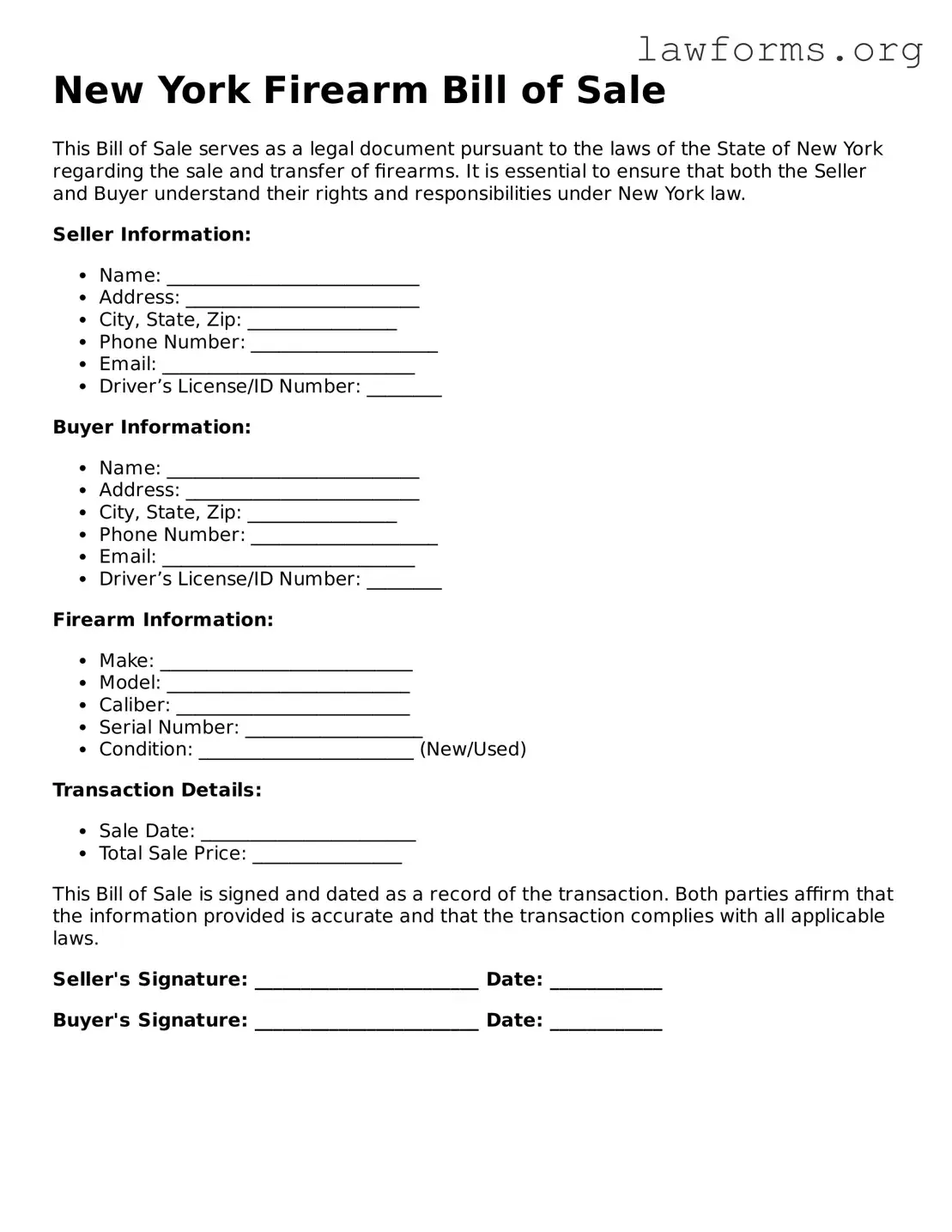New York Firearm Bill of Sale
This Bill of Sale serves as a legal document pursuant to the laws of the State of New York regarding the sale and transfer of firearms. It is essential to ensure that both the Seller and Buyer understand their rights and responsibilities under New York law.
Seller Information:
- Name: ___________________________
- Address: _________________________
- City, State, Zip: ________________
- Phone Number: ____________________
- Email: ___________________________
- Driver’s License/ID Number: ________
Buyer Information:
- Name: ___________________________
- Address: _________________________
- City, State, Zip: ________________
- Phone Number: ____________________
- Email: ___________________________
- Driver’s License/ID Number: ________
Firearm Information:
- Make: ___________________________
- Model: __________________________
- Caliber: _________________________
- Serial Number: ___________________
- Condition: _______________________ (New/Used)
Transaction Details:
- Sale Date: _______________________
- Total Sale Price: ________________
This Bill of Sale is signed and dated as a record of the transaction. Both parties affirm that the information provided is accurate and that the transaction complies with all applicable laws.
Seller's Signature: ________________________ Date: ____________
Buyer's Signature: ________________________ Date: ____________
